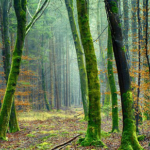
“We do so much, we run so quickly, the situation is difficult, and many people say, “Don’t just sit there, do something.” But doing more things may make the situation worse. So you should say, “Don’t just do something, sit there.” Sit there, stop, be yourself first, and begin from there.”[1]
‘My mind is alive with thousands of bees that seem to inhabit my whole body when I’m facilitating/leading groups and the stakes for emotional boil over are high. It’s exhausting and gets in the way of being fully present. How can I slow my mind and body down to help me, and others, to hold these spaces with more care and less carefulness’?
This is an excerpt from 2018 from my journal that I keep as part of my ongoing learning process as a Conscious Leader.
What does it look and feel like to shift from being careful to taking care?
This is a core question for anyone developing their conscious leadership practice, and holds particular importance in equity, diversity and inclusion work. As a white woman, being careful can take me into an ego-centric, individualised space where I am centring my need for comfort, rather than the needs of Black colleagues who are experiencing in the moment and ongoing racial discrimination and exclusion. In this state of carefulness, my breath quickens, my heart races and my mind becomes buzzy and bee like, unable to think or respond clearly; my body has signalled a red alert and I am rapidly entering a ‘locked and loaded’ mode.
From a neuroscience perspective my amygdala (a part of the limbic system which regulates emotional and behavioural responses) has been activated and has sent an urgent message to my sympathetic nervous system. This is sometimes referred to as an Amygdala hijack where my fight, flight, freeze response has been triggered and is responding to psychological stress as if I am in physical danger.
It is important to remember that, in this example, although I may be feeling frightened, anxious or overwhelmed, I am not at risk of physical harm. The ability to discern when we are in danger and physically unsafe, for example teetering at the top of a ladder, and when we are not, allows us to cultivate an appropriate and timely response. In the case of the ladder quick action is required to steady ourselves.
If we are open to them, experiences of psychological and emotional stress as a response to discomfort are rich ground to develop the qualities of Conscious Leadership- the courage and resilience required to do something radical: instead of speeding up, which for me means I may avoid or deny my own and other’s experiences, overcompensate or tune out, slow down and feel into the raw qualities of what’s happening in the moment. It means moving from that individualised state of being careful to a space of collective care, where I, and perhaps others, are able respond with accountability, curiosity and compassion.
It is a wonderful opportunity to ask ourselves:
- When do I start to feel overwhelmed and what goes on in my body?
- What am I learning about myself when I am able to stay present with my raw experience, even for a moment or two?
- What helps me to regulate, feel more grounded and able to support myself and centre others?
Spending time exploring these questions is a powerful way of developing the Conscious Leadership qualities required to be less prone to dysregulation, and to support ourselves and others with care when it does arise. This practice of slowing ourselves down and ‘staying with’, especially when we want to speed up, or we are working in organisational systems with strong ‘go fast’ drivers, provides us with the gift of learning how to maintain equilibrium when stormy weather, such bias and discrimination, show up, often with little warning.
Slowing down isn’t about ‘going slow’ all the time. Work and life can be extremely fast paced. Slowing down actually allows us to speed up and act with clarity and decisiveness when required.
This came up for me during an initial contracting conversation for a new piece of work. There was a noticeable sense of urgency in the room, expressed by the CEO in what I experienced as a tense tone- this work needed to be completed before the end of the financial year. Another senior leader quickly agreed and then added another task into the mix which hadn’t been discussed. Others were silent.
Remembering it now in an embodied sense, I felt a tightening around my skull, and a slight ebbing of energy. The organisation, as I have experienced it, habitually privileges a fire-fighting way of operating, where self-care is not valued. I noticed a rising irritation in myself, an increased heartbeat, and racing thoughts: ‘we don’t have time for this! I’m not going to get us to the point where we need to be!’ Then: ‘why is it always like this’? Rather than being present, I was judging the group and myself.
Slowing down doesn’t need to take a long time. In this example I was able to pause just long enough to notice my response without immediately reacting- a matter of seconds. A curiosity opened up and I wondered if my racing heart and mind were responding to the larger organisational field of ‘frenzy overload’, needing to perform and ‘just get the job done’. These insights left me with greater space for action, some choices as to the next step I might take.
Tuning in to the perceived energy in the room, I took a deep breath, exhaled and shared my experience of this conversation, and wondered aloud at how others felt. I also shared a sense of how the organisation’s culture and habits might be affecting us at present and noted my racing heart and mind. This intervention generated fresh energy and sharing from each colleague. The CEO reflected on the pressure to get things done, which often means nothing gets completed. From this conversation we were able to create a clear contract of work with a flexible deadline which had genuine buy in and support and saved a lot of time during the delivery of the project.
Taking the time to connect with ourselves and others and building strong foundations of mutual trust and respect enable us to work and support one another with greater effectiveness. Slowing down as a Conscious Leadership practice supports us to act with speed and resolve when it’s needed.
By no means am I always able to slow down enough in a high stakes moment to ground and re-connect with my parasympathetic nervous system. Often it is only afterwards I reflect on my response and use this to continue learning about myself. The goal is not perfection, it is about practice and commitment with care, courage and compassion.
Accepting our raw experience in the moment
Having the courage to feel into to the raw experience of any given moment has, for me, opened up possibilities of different ways of being, and a practice of deep acceptance for myself and others. Slowing down when my ‘speed up’ driver is in full force can feel paradoxical, however change only occurs when we become/fully accept ourselves in the moment, rather than trying to become what we are not or are reacting from an unconscious or triggered state.[2]
As Conscious Leaders, attending to this inner work of acceptance, and the changes which can come from it, holds the potential for generating changes across groups and systems. By noticing and naming organisational habits, for example how structural and institutional inequity continue to flourish, and fully accepting the experiences of those impacted, the possibility of creating genuine spaces of action for change increases.
Take a moment now to ask yourself: What do I notice when I pause and slow down?
Slowing down with compassion
…forgiveness and compassion are always linked: how do we hold people accountable for wrongdoing and yet at the same time remain in touch with their humanity enough to believe in their capacity to be transformed?[3]
The art of slowing down requires deep compassion for ourselves and others. Tibetan Buddhism refers to the practice of ‘compassionate abiding’, a way of bringing a sense of warmth and friendliness to our moment-to-moment experiences. The ability to cultivate compassion, courage and vulnerability supports us to work from the ‘inside out’. It also helps us to stay with feelings of discomfort as we explore our internal landscape and develop awareness of how our lived experiences shape our values, beliefs, attitudes and behaviours towards ourselves and others.
Slowing down to bring a conscious awareness and deep listening to our emotions, thoughts and body sensations, supports us to build inner acceptance, stamina, and healing. It allows us to see more clearly as Conscious Leaders how we can act to create a culture of mutual accountability, solidarity and belonging. By turning towards the complexities of how power and privilege show up in ourselves, between one another and in organisations, spaces of dialogue about them can be created, ‘aspiring to think, not the same, but in a spirit of mutuality and collaboration’[4].
Slowing down supports me as a conscious leader to stay open and in connection with myself, others and the wider systems of which I am a part, rather than turning away in judgement or even hatred. When we commit to deeply listening to, turning towards and understanding ourselves in this way we are able to be in relationship with others who are both similar and different to us: understanding ourselves helps us to support others.
Fully immersing ourselves in these movements, within and between us, of courage and compassion, of vulnerability and love, accountability and response-ability, of rupture and healing, are only possible if we slow down enough to listen with our whole selves. When we do, the possibilities open to us and others as Conscious Leaders are endless.
Mosses and other small beings issue an invitation to dwell for a time right at the limits of ordinary perception. All it requires of us is attentiveness. Look in a certain way and a whole new world can be revealed. [5]
[1] Thích Nhất Hạnh, Being Peace
[2] Beisser, A. (1970) The Paradoxical Theory of Change
[3] Bell hooks in conversation with Maya Angelou (1989)
[4] Salami, M. (2014) Toxic Wars vs Conscientious Feminism in Gunaratnam, Y. Complicit No MoreMedia diversified http://mediadiversified.org/2014/03/08/complicit-no-more/
[5] Robin Wall Kimmerer, R. W. (2021) Gathering Moss: A Natural and Cultural History of Mosses London: Penguin Press. As a botanist, Robin Wall Kimmerer asks questions of nature with the tools of science. As a mother, daughter and member of the Citizen Potawatomi Nation, she embraces the notion that plants and animals are our oldest teachers and brings these two lenses of knowledge together shows how other living beings offer us gifts and lessons.






